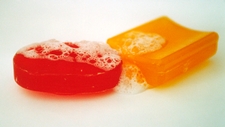Safe Practices and Equipment

TEKS Objective
The student will recognize and demonstrate safe practices as described in the Texas Safety Standards during classroom and outdoor investigations, including wearing safety goggles, washing hands, and using materials appropriately.
Essential Understanding
The student conducts classroom and outdoor investigations following home and school safety procedures and uses environmentally appropriate and responsible practices.
Science Background
Science Safety in Elementary Schools: BioEd Online (video) - Video covers safety fundamentals that promote a risk-free environment for students’ science investigations, including tips for safe classroom practices, safety equipment, and strategies for setting up a safety object wall.
Science Safety in Elementary Schools
BioEd Online, www.bioedonline.org
Texas Safety Standards, Kindergarten through Grade 12 Science: Charles A. Dana Center (website) - A guide to laws, rules, regulations, and safety procedures for classroom, laboratory, and field investigations; publication may be ordered or downloaded as individual chapters.
Science and Safety… It’s Elementary: Council of State Science Supervisors (PDF) - Free safety guides for teachers and educators.
Science and Safety… It’s Elementary
Council of State Science Supervisors, www.csss-science.org
Signature Lesson
Science Classroom and Field Investigation Safety: SuperSTAAR (website) - Two activities that help students to recognize and demonstrate basic safety information and reinforce student safety rules for classroom and outdoor science lessons.
- Supporting Lessons
- Extensions
- Assessment Ideas
- Literature Connections
- Related
TEKS - Additional Resources
Supporting Lessons
Milli’s Safety Tips: American Chemical Society (PDF) - Safety tips for young children.
Milli’s Safety Tips
American Chemical Society, portal.acs.org
Elaboration Lessons and Extensions
Science Safety is Elementary, Grade Three: Ohio Department of Education (PDF) - Identify and apply basic science safety procedures with this lesson, which can be easily adapted for 1st grade.
Science Safety is Elementary, Grade Three
Ohio Department of Education, ims.ode.state.oh.us
Assessment Ideas
Laboratory Safety Practice Drills for K-5: Science Safety Consulting (PDF) - Scenarios designed to assess students understanding of science safety rules.
Literature Connections
Don’t be Hasty with Science Safety. Pederson, Bridget. (ISBN 1599285800)
School Safety. Rivera, Sheila. (ISBN 0822568225)
Additional Resources
Safety in the Science Classroom: National Science Teachers Association (website) - Provides OSHA training requirements and guidelines, at both the national and state level (by state).
Safety in the Science Classroom
National Science Teachers Association, www.nsta.org
TEKS Navigation
Grade 1
Need Assistance?
If you need help or have a question please use the links below to help resolve your problem.

Comments